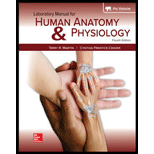
As a person ages, the elasticity of the lens
a. decreases.
b. creases.
c. remains unchanged
d. improves.
Introduction:
The eye is a three-layered, fluid filled ball divided into two chambers. The sclera forms a white capsule around the eye, except at its anterior surface where it is specialized into clear cornea. The tough, fibrous sclera serves as the insertion point for external muscles that more the eyeballs within their sockets. A portion of the underlying choroid layer is darkly pigmented to absorb light rays at the back of the eyeball. In the front, the choroid layer is specialized into the iris (the structure that gives your eyes their color), the ciliary muscle, and the zonular fibers. Circular and radial smooth muscle fibers of the iris determine the diameter of the pupil, the anterior opening that allows light into the eye. The ciliary muscles determine the shape and focusing power of the crystalline lens just behind the iris. The retina is formed from an extension of the developing brain in fetal life on which the real and inverted image is formed. The eye is divided into two fluid-filled spaces- the aqueous humor between the iris and cornea and vitreous humor between lens and the retina.
Answer to Problem 1PL
Correct answer:
The correct answer is option (a) decreases.
Explanation of Solution
Explanation/justification for the correct answer:
Option (a) decreases. When the eye needs to focus on closely placed objects, the lens needs to change its shape and increase its curvature. This activity is mediated by the ciliary muscles. With the advancement of age, the lens become tough and it becomes difficult to change the shape of the lens. This means that elasticity of the lens decreases. So, the correct answer is option (a).
Explanation for incorrect answer:
Option (b) increases. As the lens becomes tough, it will naturally become less elastic. Therefore, elasticity decreases and does not increase. So, this is an incorrect option.
Option (c) remains unchanged. With the advancement of age, the ciliary muscles become weak and lens becomes tough. Therefore, slowly the condition of the eye starts to deteriorate. So, this is an incorrect answer.
Option (d) improves. As the lens becomes tough, it will naturally become less elastic. Therefore, elasticity decreases and does not improve. So, this is an incorrect option.
Want to see more full solutions like this?
Chapter 36 Solutions
Laboratory Manual For Human Anatomy & Physiology
- Where in the eye does the main refraction take place? a) in the ventricular fluid b) in the vitreous c) in the cornea d) in the lensarrow_forwardThe human eye focuses bya. changing the thickness of the lens.b. changing the shape of the lens.c. opening and closing the pupil.d. rotating the lens.arrow_forwardWhen the ciliary muscle is contracted, the following will: a) lens to become more spherical b) pupil to be dilated c) pupil to contract d) the lens to be flattenedarrow_forward
- Why is it easier to see images at night using peripheral, rather than the central, vision? a. Cones are denser in the periphery of the retina. b. Bipolar cells are denser in the periphery of the retina. c. Rods are denser in the periphery of the retina. d. The optic nerve exits at the periphery of the retina.arrow_forwardIf someone is born with dense cataracts on both eyes, and the cataracts are removed years later, what happens?A. The person remains permanently blind.B. The person gradually recovers all aspects of vision.C. The person gains some vision, but remains impaired on object recognition, motion vision, and depth perception.D. The person gains almost all aspects of vision, but remains greatly impaired on color perception.arrow_forwardAs people age, the lens of the eye becomes ____, which leads to a type of farsightedness called _____. a. less flexible; hyperopia b. less flexible; presbyopia c. more flexible; hyperopia d. more flexible; presbyopiaarrow_forward
- If someone is color-blind, which structure is malfunctioning? A.None B.Cones C.Cornea D.Rods E.Optic disc F. All are correct.arrow_forwardA person with a myopic eye cannot see objects beyond 1.2 m distinctly. What should be the corrective lens used to restore proper vision?arrow_forwardA bar of light in a specific part of the retina, with a particular length and orientation, is the most effective stimulus for a.retinal ganglion cells. b.lateral geniculate cells. c.simple cortical cells. d.complex cortical cells.arrow_forward
- Eyelids that separate may be corrected by: a. a surface pack of cavity fluid b. stretching and cementing c. injecting a bleaching agent d. heat from an electric spatulaarrow_forwardWhy is a retinal defect, such as retinitis pigmentosa, which causes tunnel vision, associated with night blindness? a. Tunnel vision and night blindness are unrelated conditions. b. The high density of rod photoreceptors in the fovea are unaffected in each condition. c. The highest resolution cone photoreceptors are found exclusively in the outer regions of the retina. d. The color-detecting cone photoreceptors have the greatest density in the outer regions of the retina. e. The highly-sensitive rod photoreceptors are located in the outer regions of the retina.arrow_forward
- Essentials of Pharmacology for Health ProfessionsNursingISBN:9781305441620Author:WOODROWPublisher:Cengage
 Human Physiology: From Cells to Systems (MindTap ...BiologyISBN:9781285866932Author:Lauralee SherwoodPublisher:Cengage Learning
Human Physiology: From Cells to Systems (MindTap ...BiologyISBN:9781285866932Author:Lauralee SherwoodPublisher:Cengage Learning Comprehensive Medical Assisting: Administrative a...NursingISBN:9781305964792Author:Wilburta Q. Lindh, Carol D. Tamparo, Barbara M. Dahl, Julie Morris, Cindy CorreaPublisher:Cengage Learning
Comprehensive Medical Assisting: Administrative a...NursingISBN:9781305964792Author:Wilburta Q. Lindh, Carol D. Tamparo, Barbara M. Dahl, Julie Morris, Cindy CorreaPublisher:Cengage Learning





